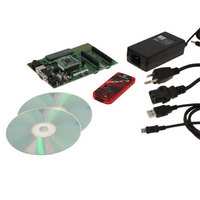DV164136 Microchip Technology, DV164136 Datasheet - Page 227

DV164136
Manufacturer Part Number
DV164136
Description
DEVELOPMENT KIT FOR PIC18
Manufacturer
Microchip Technology
Series
PIC®r
Type
MCUr
Datasheets
1.DM183032.pdf
(38 pages)
2.DV164136.pdf
(448 pages)
3.DV164136.pdf
(6 pages)
4.DV164136.pdf
(446 pages)
5.DV164136.pdf
(4 pages)
6.DV164136.pdf
(18 pages)
Specifications of DV164136
Contents
Board, Cables, CDs, PICkit™ 3 Programmer, Power Supply
Processor To Be Evaluated
PIC18F8722, PIC18F87J11
Interface Type
RS-232, USB
Operating Supply Voltage
3.3 V, 5 V
Silicon Manufacturer
Microchip
Core Architecture
PIC
Core Sub-architecture
PIC18
Silicon Core Number
PIC18F
Silicon Family Name
PIC18F8xxx
Kit Contents
PIC18 Exp Brd PICkit 3 Cable CD PSU
Lead Free Status / RoHS Status
Lead free / RoHS Compliant
For Use With/related Products
PIC18F8722, PIC18F87J11
Lead Free Status / Rohs Status
Lead free / RoHS Compliant
Available stocks
Company
Part Number
Manufacturer
Quantity
Price
Company:
Part Number:
DV164136
Manufacturer:
MICROCHIP
Quantity:
12 000
- DM183032 PDF datasheet
- DV164136 PDF datasheet #2
- DV164136 PDF datasheet #3
- DV164136 PDF datasheet #4
- DV164136 PDF datasheet #5
- DV164136 PDF datasheet #6
- Current page: 227 of 446
- Download datasheet (7Mb)
19.4.4
Both 7-Bit and 10-Bit Slave modes implement
automatic clock stretching during a transmit sequence.
The SEN bit (SSPxCON2<0>) allows clock stretching
to be enabled during receives. Setting SEN will cause
the SCLx pin to be held low at the end of each data
receive sequence.
19.4.4.1
In 7-Bit Slave Receive mode, on the falling edge of the
ninth clock at the end of the ACK sequence, if the BF
bit is set, the CKP bit in the SSPxCON1 register is
automatically cleared, forcing the SCLx output to be
held low. The CKP being cleared to ‘0’ will assert the
SCLx line low. The CKP bit must be set in the user’s
ISR before reception is allowed to continue. By holding
the SCLx line low, the user has time to service the ISR
and read the contents of the SSPxBUF before the
master device can initiate another receive sequence.
This will prevent buffer overruns from occurring (see
Figure 19-13).
19.4.4.2
In 10-Bit Slave Receive mode during the address
sequence, clock stretching automatically takes place
but CKP is not cleared. During this time, if the UA bit is
set after the ninth clock, clock stretching is initiated.
The UA bit is set after receiving the upper byte of the
10-bit address and following the receive of the second
byte of the 10-bit address with the R/W bit cleared to
‘0’. The release of the clock line occurs upon updating
SSPxADD. Clock stretching will occur on each data
receive sequence as described in 7-bit mode.
© 2008 Microchip Technology Inc.
Note:
Note 1: If the user reads the contents of the
2: The CKP bit can be set in software
CLOCK STRETCHING
If the user polls the UA bit and clears it by
updating the SSPxADD register before the
falling edge of the ninth clock occurs and if
the user hasn’t cleared the BF bit by read-
ing the SSPxBUF register before that time,
then the CKP bit will still NOT be asserted
low. Clock stretching on the basis of the
state of the BF bit only occurs during a
data sequence, not an address sequence.
SSPxBUF before the falling edge of the
ninth clock, thus clearing the BF bit, the
CKP bit will not be cleared and clock
stretching will not occur.
regardless of the state of the BF bit. The
user should be careful to clear the BF bit
in the ISR before the next receive
sequence in order to prevent an overflow
condition.
Clock Stretching for 7-Bit Slave
Receive Mode (SEN =
Clock Stretching for 10-Bit Slave
Receive Mode (SEN =
1
1
)
)
19.4.4.3
The 7-Bit Slave Transmit mode implements clock
stretching by clearing the CKP bit after the falling edge
of the ninth clock if the BF bit is clear. This occurs
regardless of the state of the SEN bit.
The user’s ISR must set the CKP bit before transmis-
sion is allowed to continue. By holding the SCLx line
low, the user has time to service the ISR and load the
contents of the SSPxBUF before the master device
can
Figure 19-9).
19.4.4.4
In 10-Bit Slave Transmit mode, clock stretching is
controlled during the first two address sequences by
the state of the UA bit, just as it is in 10-Bit Slave
Receive mode. The first two addresses are followed
by a third address sequence which contains the
high-order bits of the 10-bit address and the R/W bit
set to ‘1’. After the third address sequence is
performed, the UA bit is not set, the module is now
configured in Transmit mode and clock stretching is
controlled by the BF flag as in 7-Bit Slave Transmit
mode (see Figure 19-11).
PIC18F8722 FAMILY
Note 1: If the user loads the contents of
initiate
2: The CKP bit can be set in software
SSPxBUF, setting the BF bit before the
falling edge of the ninth clock, the CKP bit
will not be cleared and clock stretching
will not occur.
regardless of the state of the BF bit.
Clock Stretching for 7-Bit Slave
Transmit Mode
Clock Stretching for 10-Bit Slave
Transmit Mode
another
transmit
DS39646C-page 225
sequence
(see
Related parts for DV164136
Image
Part Number
Description
Manufacturer
Datasheet
Request
R

Part Number:
Description:
Manufacturer:
Microchip Technology Inc.
Datasheet:

Part Number:
Description:
Manufacturer:
Microchip Technology Inc.
Datasheet:

Part Number:
Description:
Manufacturer:
Microchip Technology Inc.
Datasheet:

Part Number:
Description:
Manufacturer:
Microchip Technology Inc.
Datasheet:

Part Number:
Description:
Manufacturer:
Microchip Technology Inc.
Datasheet:

Part Number:
Description:
Manufacturer:
Microchip Technology Inc.
Datasheet:

Part Number:
Description:
Manufacturer:
Microchip Technology Inc.
Datasheet:

Part Number:
Description:
Manufacturer:
Microchip Technology Inc.
Datasheet:











